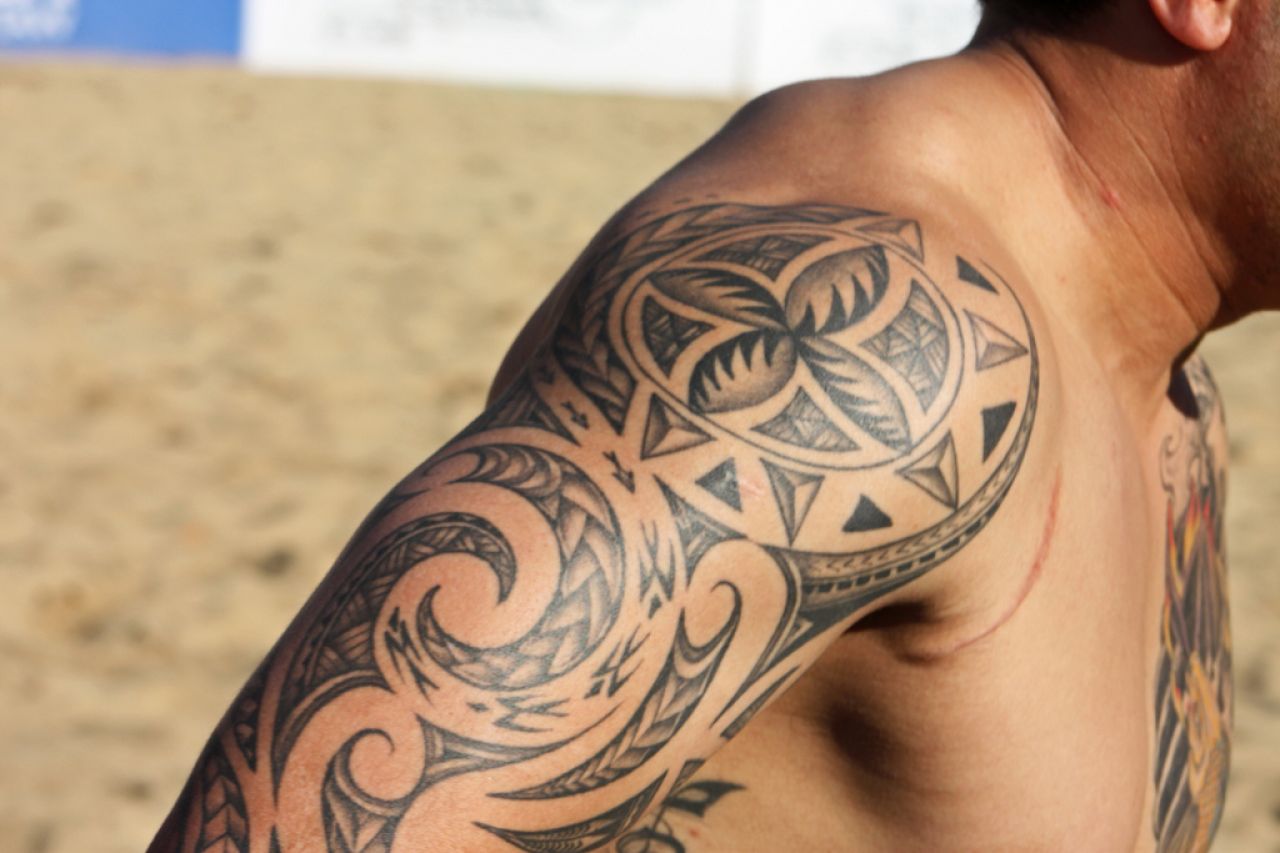Tattoo
Tattoo is derived from Tahitian word “TO STRIKE’
It’s a myriad form of body art used to beautify as a mode of self enhancement
Tattooing is a process of implanting pigment granules into the dermal layer of the skin using needles, manually or through a machine.
There are medical indications for tattooing like camouflaging the burn marks, birth marks and for leucoderma (vitiligo) to fill pigment in depigmented skin.
which is well known in the medical fraternity. The pigment is tattooed in a manner that the skin matches the surrounding skin in color and texture. Permanent makeup tattoo also called as micro pigmentation is one where pigments are used to fill up thinning eyebrows brown pigment, to define the lip lining or to create moles and beauty spots.
Aesthetic tattooing for personal adornment is recently in vogue and people who opt for it have an animated desire to look different. Common among the adolescent age group, but catching up with more mature ones too
There are five types of tattoos: amateur, professional, cosmetic, medicinal, and traumatic.
The equipment used is a handheld pen with 10 -15 sewing needles attached to it like a toothbrush .an electric tattoo machine or gun is also available but the pencil type of rotatory machine is more popular
Various inert powders, salts of synthetic organic substances are used as a pigment to create various shades. These are deposited at uniform depth and density to create a pattern.

Pros of Medical Tattoing
- Instant camouflage of patches improving marriage or job prospects
- the procedure is repetitive and any area can be tattooed
- medical tattooing done with proper aseptic precautions and skill can yield rewarding results
Risks involved in tattooing
At the Site of tattoo there is a risk of physical damage to blood vessels/nerves causing undue bleeding or pain Local infection by bacteria due to inadequate sterilization of needles, or poor technique
Allergy to the pigment material used
Often there is change in pigment over time with clouding or halo effect, which is cosmetically unacceptable Misplacement of pigment may occur resulting in a rejection mechanism by body seen as foreign body reactions
If tattoo is implanted too superficially it may be extruded along with shedding skin cells
Risk of scarring or overgrowth of scar tissue resulting in keloids
Transmission of potentially transmissible infections like tuberculosis, leprosy, HIV, hepatitis B and C etc In the present era if the needles used are not sterile, or used on multiple clients a strong threat of transmitting HIV infection strongly stands.
If yet temptation for tattoo overwhelms following precautions are mandatory
Should be done by a qualified personnel
Fresh and sterile Needles should be used
Pigment containing iron oxide, titanium dioxide particularly white, yellow, orange and red should be avoided Pigment should be safe sterile and non toxic ink, which should be easily removable. It must be kept in mind the more intricate colors and mixture of organic dyes metal and solvents mixed less removable the tattoo is
Removal Of Tattoo
When the craze of sporting a particular tattoo wears off one may even want to get rid of the tattoo totally
Laser techniques are now available for this purpose and in fact the Q switched lasers are a boon to all those who seek tattoo removal.
With new advances in Q-switched laser technology, tattoo removal can be achieved with minimal risk of scarring and permanent pigmentary alteration
Laser removal is effective for dark blue and black and green tattoos the best,
Pigments which contain iron oxide darken on exposure to laser, so a test patch at site should be done before the procedure is undertaken
Amateur tattoos can be removed in a series of 3-4 sittings done at one monthly interval but Intricate and multicolored tattoos need at least 6- 8 sittings. Often in intricate tattoos, total elimination may not happen and a ghost image of the design may be left behind
Camouflaging can be done in cases that do not wish for laser or have pigments that are not conducive to laser
DISLAIMER:
THE INFORMATION IN THIS ARTICLE REFLECTS THE VIEWS OF THE AUTHOR ONLY. A QUALIFIED HEALTH CARE PROFESSIONAL SHOULD BE CONSULTED BEFORE USING ANY THERAPEUTIC PRODUCT DISCUSSED. ALL READERS SHOULD VERIFY ALL INFORMATION AND DATA BEFORE TREATING PATIENTS OR UTILIZING ANY THERAPIES NOTED IN THIS PROGRAMME.
